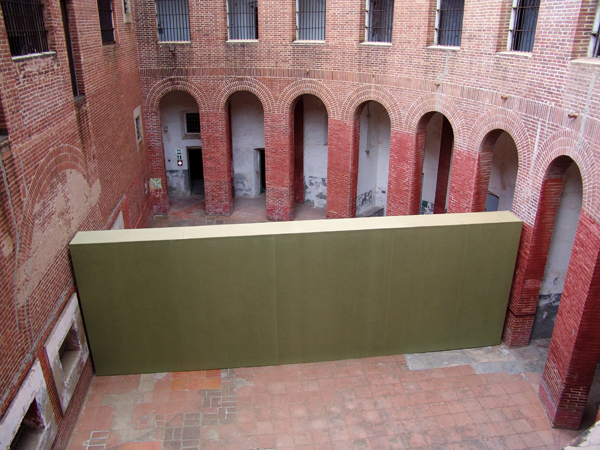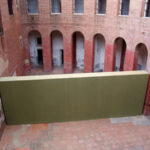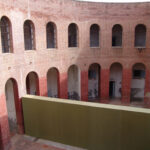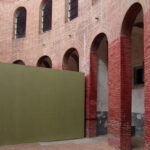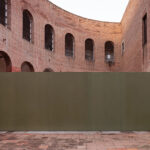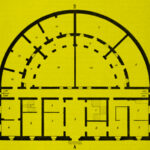2024
Site-specific installation for Mataró Prison
Wood
300 x 880 x 60 cm
The Mataró Prison, built by the architect Elies Rogent in 1853, is the first example of the panoptic model constructed in Spain.
In 1791, the British philosopher Jeremy Bentham published the essay Panopticon / The Inspection House. In this work, Bentham outlines the principles of the panopticon (from the Greek “all-seeing /observing”). The project describes a system of absolute and perfect surveillance though a circular architecture designed so that the residents, whether prisoners, patients, schoolchildren or factory workers, are always under strict visual control, even if those being watched cannot see who is watching them and when. Nothing escapes the watchful eye of the guardian.
Originally, the yard of Mataró Prison had a wall that divided in two parts, separating the section for women from for men. Eventually, after some years, when the prison became exclusively for men, the wall was demolished. Today, however, traces of this wall can still be seen on the ground and on walls of the yard.
By reconstructing the wall, this temporary intervention aims to recover part of the building’s forgotten memory and alter the physical experience of the visitors, who will be forced to retrace their steps in order to visit the entire proposal “A Century of European Architecture”
“Wall” is part of the proposal “A century of European architecture” at the MAC Mataró Art Contemporani for the Manifesta 15 biennial.
Manifesta 15. Barcelona Metropolitana. 08.09.2024 — 24.11.2024
